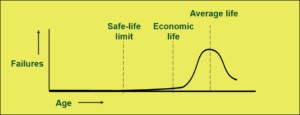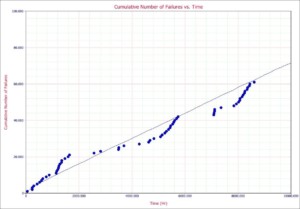Establishing Fixed Time Maintenance Intervals
How to Select The Optimum Fixed Time Maintenance Intervals
 Think about your maintenance program. How often are your PMs scheduled? How were those frequencies established? If you are in the majority, the chances are that the frequencies were either established from the OEM manual, or by someone in the department without data.
Think about your maintenance program. How often are your PMs scheduled? How were those frequencies established? If you are in the majority, the chances are that the frequencies were either established from the OEM manual, or by someone in the department without data.
Establishing the correct frequency of maintenance activities is critical to the success of any maintenance program. Too infrequently and the organization is subjected to failures, resulting in poor operational performance. Too frequently, and the organization is subjected to excess planned downtime and […]

 Data and the analyses that use the data can be tricky to manage at best, let along extremely difficult. In this last post of the series on using the maintenance data you have, Fred and James will answer many of the common questions asked about data and the analyses.
Data and the analyses that use the data can be tricky to manage at best, let along extremely difficult. In this last post of the series on using the maintenance data you have, Fred and James will answer many of the common questions asked about data and the analyses. Nothing keeps a statistician happy like a pile of data. As seen in the previous articles, you can easily use the data you already have to conduct meaningful analysis. This includes
Nothing keeps a statistician happy like a pile of data. As seen in the previous articles, you can easily use the data you already have to conduct meaningful analysis. This includes  A few years into your reliability journey, you start to struggle to make the improvements you were able to when you first started. Why is this? You were able to systematically eliminate all of the low hanging fruit using the existing data in your CMMS. But now you have to dig deeper to realize the improvements and that requires better data.
A few years into your reliability journey, you start to struggle to make the improvements you were able to when you first started. Why is this? You were able to systematically eliminate all of the low hanging fruit using the existing data in your CMMS. But now you have to dig deeper to realize the improvements and that requires better data. Your facility has data and maybe too much data. Using simple plotting may be the key to unlocking how well your maintenance program is performing.
Your facility has data and maybe too much data. Using simple plotting may be the key to unlocking how well your maintenance program is performing.